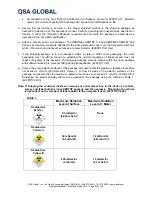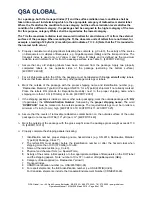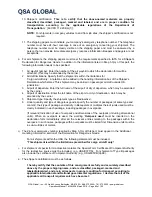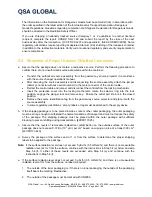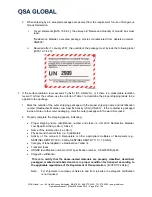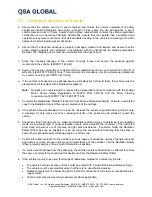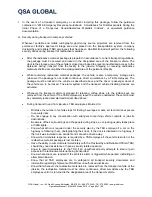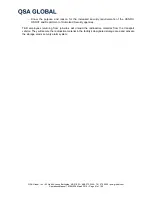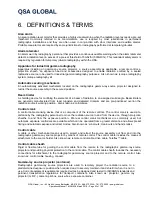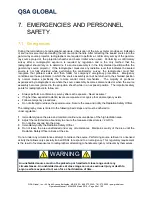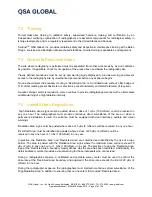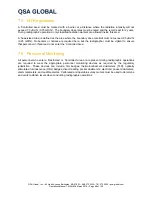
QSA Global, Inc.
40 North Avenue Burlington, MA 01803
888.272.2242
781.272.2000
qsa-global.com
Operations Manual
MAN-038 March 2019
Page 97 of 100
7.2 Training
Formal classroom training in radiation safety, supervised hands-on training and certification by an
independent certifying organization of radiographers are essential components for radiological safety in
isotope radiography and is a regulatory requirement in the United States and Canada.
Sentinel
TM
, QSA Global, Inc. provides radiation safety and inspection & maintenance training at the Baton
Rouge, Louisiana and Burlington, Massachusetts facilities. On-site training is available by arrangement.
7.3 Access to Restricted Areas
The site where radiography is performed must be separated from other work areas by as much distance
as possible. If applicable, check for occupation of the areas above and below the radiography site.
Clearly defined boundaries must be set up and warning signs displayed to provide warning and prevent
access to the radiography site by unauthorized personnel before any exposure begins.
No one should enter the boundary marking a ‘Restricted Area’ or ‘Controlled Area’ without a film badge or
TLD, direct reading pocket dosimeter (or electronic pocket dosimeter) and alarm ratemeter (if required).
A pocket ‘chirper’ alarm is required in some countries to provide radiography personnel with an immediate
audible warning of a high radiation intensity.
7.4 United States Regulations
‘High Radiation Area’ signs must be posted where a dose of 1 mSv (100 mRem) could be received in
any one hour. The radiographers must provide continuous direct surveillance of the area or when a
permanent installation is used, the entrance must be equipped with door interlocks, audible and visual
warnings.
‘Radiation Area’ signs must be posted where dose of 5 µSv (5 mRem) could be received in any one hour.
‘Restricted Area’ must be identified and posted where a dose of 20 µSv (2 mRem) could be
received in any one hour or 1 mSv (100 mRem) in one year.
In practice, the ‘Radiation Area’ and ‘Restricted Area’ are combined and identified by the use of a rope
barrier. The area is posted with the ‘Radiation Area’ signs where the maximum dose will not exceed 20
µSv (2 mR) in any one hour or 1 mSv (100 mRem) in a year. The practice of using the ‘Radiation Area’
sign at the ‘Restricted Area’ boundary clearly defines why the area has been restricted. Additionally, the
trefoil (radiation) symbol provides a visual warning for those individuals who cannot read.
During a radiographic exposure, a calibrated and operable survey meter must be used to confirm the
dose rate at the ‘Restricted Area’ boundary and adjusted if the dose rate exceeds the limit of 20 µSv (2
mRem) in one hour.
During the radiographic exposure, the radiographers must maintain continuous direct surveillance of the
‘High Radiation Area’ in addition to ensuring that no one enters their posted ‘Restricted Area’.

